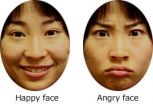(Press-News.org) More than half of the patients who have suffered a stroke with no well-defined aetiology have an enlarged left atrial appendage of the heart, according to a Finnish study. The results indicate that the enlargement of the left atrial appendage may be an independent risk factor of strokes with cardiac origin.
Mr Mikko Taina, Licentiate of Medicine, presented the results in his doctoral thesis at the University of Eastern Finland.
Stroke is the leading cause of long-term disability and a major burden on health-care resources worldwide. Stroke is responsible for 10 per cent of all deaths, being the second most common cause of mortality. However, more than a third of all ischemic strokes are cryptogenic, which means that their aetiology is unclear.
Stroke diagnostics relies on imaging
The data for the study is comprised of patients who suffered a sudden stroke and were treated in the emergency room of Kuopio University Hospital in 2005–2009. Conventionally, a stroke diagnosis is made on the basis of the patient's symptoms and computed tomography. A CT scan is performed in order to determine whether the patient's paralysis symptom is caused by a cerebral or carotid embolism, or an intracranial haemorrhage. It is crucial to tell the difference between an embolism and a haemorrhage, as the wrong treatment can worsen the patient's symptoms and, in the worst case scenario, lead to the patient's death. Over the past decade, computed tomography has been used not only to exclude haemorrhages but also to locate embolisms in the brain and the neck.
A wider imaging window gives information about the heart
In the present study, computed tomography was used to scan not only the blood vessels in the brain and the neck, but also in the heart. Emboli from cardiac origins account for 15–30% of all ischaemic strokes. Most cardiac thrombi originate from the left atrial appendage. The study examined the volume of the left atrial appendage in stroke patients. An enlarged left atrial appendage could be explained by paroxysmal atrial fibrillation, or be an independent risk factor of stroke. Atrial fibrillation is the most important cause of intracardiac clotting.
The study focused especially on patients whose stroke could not be explained with the help of the traditional examination methods. This group of patients is important, because the aetiology of 30% of all brain blood clots remains a mystery. In this group of patients, the left atrial appendage was on average 67% larger than in the healthy control group. The difference is statistically very significant, even when the patient's body size and the presence of diseases that enlarge the atrial appendage were taken into consideration.
A reliably measurable, independent variable
The study also focused on the reliability of atrial appendage volume measurements as well as on factors that can cause enlarged atrial appendage. It was found that left atrial appendage volume measurements were reproducible irrespective of image quality or scanner generations. It seems that an enlarged atrial appendage is extremely poorly explained by the known risk factors. This could indicate that enlarged atrial appendage is an independent risk factor of stroke caused by cardiac origins.
INFORMATION:
For further information, please contact:
Mikko Taina, tel. +358408429161, mikko.taina@kuh.fi
Professor Ritva Vanninen, tel. +358447173303, ritva.vanninen@kuh.fi
Study group webpage: http://www.uef.fi/en/kliinisenlaaketieteenyksikko/embodetect
Taina, Mikko. Left Atrial Appendage Volume in Acute Stroke. Publications of the University of Eastern Finland. Dissertations in health sciences, 1798-5706; number 243. Kuopio: University of Eastern Finland, 2014.
Original articles:
Taina M, Korhonen M, Haataja M, Muuronen A, Arponen O, Hedman M, Jäkälä P, Sipola P, Mustonen P, Vanninen R. (2014) Morphological and Volumetric Analysis of Left Atrial Appendage and Left Atrium: Cardiac Computed Tomography-Based Reproducibility Assessment. PLoS ONE 9(7): e101580. doi: 10.1371/journal.pone.0101580
Taina M, Vanninen R, Hedman M, Jäkälä P, Kärkkäinen S, Tapiola T, Sipola P. (2013) Left Atrial Appendage Volume Increased in More Than Half of Patients with Cryptogenic Stroke.PLoS ONE; 8(11):doi:10.1371/journal.pone.0079519
Taina M, Sipola P, Muuronen A, Hedman M, Mustonen P, Kantanen AM, Jäkälä P, Vanninen R. (2014) Determinants of Left Atrial Appendage Volume in Stroke Patients without Chronic Atrial Fibrillation. PLoS ONE 9(3): e90903. doi: 10.1371/journal.pone.0090903
Cryptogenic strokes may find explanation in the heart
2014-09-25
ELSE PRESS RELEASES FROM THIS DATE:
Osteoarthritis of the hip: Appropriate exercise therapy can alleviate symptoms
2014-09-25
Osteoarthritis of the hip is a progressive degenerative disorder affecting the hip joints, which affects one in 10 adults. The symptoms range from pain after intense joint loading to morning pain/stiffness and impaired mobility in everyday life. To date, no cure exists. Appropriate exercise therapy can, however, delay progression of the disease and alleviate symptoms, as shown in a randomized controlled study reported by Inga Krauß et al in Deutsches Ärzteblatt (Dtsch Arztebl Int 2014; 111: 592–9).
The physicians treated patients with hip osteoarthritis according to the ...
Human papilloma virus vaccination provides long-term protection
2014-09-25
Every year, 11.2 of every 100 000 women in Germany develop cervical cancer. Persistent infection with a high-risk human papillomavirus (HPV) type is a necessary prerequisite for the development of dysplasia and neoplasia of the cervix. HPV vaccination has been a subject of heated debate since it was incorporated into the vaccination recommendations of the German Standing Committee on Vaccination (STIKO) in 2007. This edition of Deutsches Ärzteblatt International (Dtsch Arztebl Int 2014; 111: 584–91) reveals that Yvonne Deleré of Berlin's Robert Koch Institute et al. have ...
Brains not recognizing an angry expression
2014-09-25
Inattention, hyperactivity, and impulsive behavior in children with ADHD can result in social problems and they tend to be excluded from peer activities. They have been found to have impaired recognition of emotional expression from other faces. The research group of Professor Ryusuke Kakigi of the National Institute for Physiological Sciences, National Institutes of Natural Sciences, in collaboration with Professor Masami K. Yamaguchi and Assistant Professor Hiroko Ichikawa of Chuo University first identified the characteristics of facial expression recognition of children ...
Chemists recruit anthrax to deliver cancer drugs
2014-09-25
CAMBRIDGE, MA -- Bacillus anthracis bacteria have very efficient machinery for injecting toxic proteins into cells, leading to the potentially deadly infection known as anthrax. A team of MIT researchers has now hijacked that delivery system for a different purpose: administering cancer drugs.
"Anthrax toxin is a professional at delivering large enzymes into cells," says Bradley Pentelute, the Pfizer-Laubauch Career Development Assistant Professor of Chemistry at MIT. "We wondered if we could render anthrax toxin nontoxic, and use it as a platform to deliver antibody ...
Scientists develop tool to help communities stay environmentally and socially 'healthy'
2014-09-25
Geographers at the University of Southampton have developed a new way to measure the 'health' of poor regional communities. They aim to improve the wellbeing of people by guiding sustainable development practices to help avoid social and environmental collapse.
The researchers have pioneered a methodology that examines the balance between factors such as; standards of living, natural resources, agriculture, industry and the economy. The results help identify critical limits, beyond which regions risk tipping into ecological and social downturn, or even collapse.
The ...
Experts at LSTM use modelling approach to assess the effectiveness TB diagnostics
2014-09-25
Experts at LSTM have used a novel modelling approach to project the effects of new diagnostic methods and algorithms for the diagnosis of tuberculosis (TB) recently endorsed by the World Health Organization (WHO), looking at the patient, health system and population perspective in Tanzania.
In a paper published in the journal The Lancet Global Health, LSTM's Ivor Langley and Professor Bertie Squire worked with colleagues from the Institute of Epidemiology and Preventative Medicine, National Taiwan University; National Tuberculosis and leprosy Programme, Tanzania; Department ...
Simple blood test could be used as tool for early cancer diagnosis
2014-09-25
High levels of calcium in blood, a condition known as hypercalcaemia, can be used by GPs as an early indication of certain types of cancer, according to a study by researchers from the universities of Bristol and Exeter.
Hypercalcaemia is the most common metabolic disorder associated with cancer, occurring in 10 to 20 per cent of people with cancer. While its connection to cancer is well known, this study has, for the first time, shown that often it can predate the diagnosis of cancer in primary care.
A simple blood test could identify those with hypercalcaemia, prompting ...
Perfectionism is a bigger than perceived risk factor in suicide: York U psychology expert
2014-09-25
TORONTO, September 25, 2014 – Perfectionism is a bigger risk factor in suicide than we may think, says York University Psychology Professor Gordon Flett, calling for closer attention to its potential destructiveness, adding that clinical guidelines should include perfectionism as a separate factor for suicide risk assessment and intervention.
"There is an urgent need for looking at perfectionism with a person-centred approach as an individual and societal risk factor, when formulating clinical guidelines for suicide risk assessment and intervention, as well as public ...
New findings on how brain handles tactile sensations
2014-09-25
The traditional understanding in neuroscience is that tactile sensations from the skin are only assembled to form a complete experience in the cerebral cortex, the most advanced part of the brain. However, this is challenged by new research findings from Lund University in Sweden that suggest both that other levels in the brain play a greater role than previously thought, and that a larger proportion of the brain's different structures are involved in the perception of touch.
"It was believed that a tactile sensation, such as touching a simple object, only activated a ...
Massive weight loss increases risk of complications in body-shaping surgery
2014-09-25
DALLAS – Sept. 25, 2014 – Patients who lost more than 100 pounds and those who shed weight through bariatric surgery had the highest risk of complications from later surgical procedures to reshape their leaner bodies, a new study from UT Southwestern Medical Center shows.
The study, published in the Aesthetic Surgery Journal, compared surgical complication outcomes for 450 patients who underwent body contouring, a type of surgery to remove excess sagging fat and skin to improve body shape.
"This is one of the first large-scale studies comparing outcomes in patients ...


